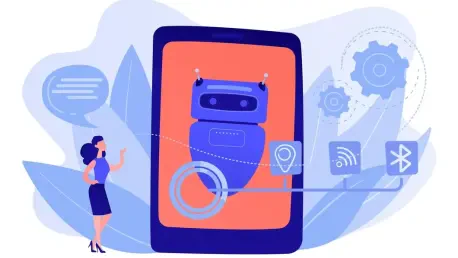I’m thrilled to sit down with Zainab Hussain, a seasoned e-commerce strategist with deep expertise in customer engagement and operations management. With years of experience helping businesses navigate the digital landscape, Zainab brings a unique perspective on how innovations like the iClone AI Assistant (IAA) can transform customer interactions. In this interview, we dive into the groundbreaking features of IAA, exploring its customization potential, lifelike animations, and the unparalleled control it offers businesses. We also touch on its versatile applications across platforms and the importance of data security in today’s market. Let’s get started!
How would you describe the iClone AI Assistant (IAA) and what sets it apart as a tool for businesses looking to enhance customer engagement?
IAA is a game-changer for businesses wanting to create personalized, interactive digital representatives. It’s an AI-powered solution that lets companies build and fully own their virtual agents for customer-facing roles. What makes it stand out is the level of control it offers—unlike many AI tools that rely on shared or rented platforms, IAA operates on a business’s own infrastructure. This means total ownership over data and models, which is huge for branding and security. It’s not just a chatbot; it’s a way to craft a digital face for your company that feels authentic and aligns with your values.
What’s the significance of businesses being able to run IAA on their own systems, and how does this compare to other AI solutions in the market?
Running IAA on your own infrastructure is a big deal because it eliminates reliance on third-party servers. Many AI solutions today operate in the cloud with shared resources, which can raise concerns about data privacy and long-term costs. With IAA, businesses have complete autonomy—your data, custom models, and interactions stay in-house. This kind of setup isn’t just about security; it also means you’re not locked into a vendor’s ecosystem, giving you flexibility to adapt as your needs grow. Compared to other solutions, this level of ownership is pretty rare and empowering.
Can you share your thoughts on the debut of IAA at SIGGRAPH 2025 in Vancouver? What was the atmosphere like, especially with the spotlight from major tech players?
The debut at SIGGRAPH 2025 was electric. Vancouver was buzzing with tech innovators, and IAA really stole the show at the Dell Technologies booth. The spotlight from NVIDIA, particularly with their ACE technology integration, added a layer of excitement—it showed how cutting-edge partnerships can elevate what’s possible with AI. The vibe was one of curiosity and awe; industry pros were genuinely impressed by the real-time, lifelike interactions IAA delivered. You could feel the sense of potential in the air, like this was the start of something transformative for digital engagement.
How does IAA enable businesses to create digital representatives that truly reflect their brand identity?
IAA gives businesses a ton of creative freedom to design digital reps that match their brand down to the smallest detail. You can choose between realistic avatars with lifelike skin textures and movements—perfect for industries like retail or healthcare where trust matters—or go for stylized characters with bold, unique looks that pop in marketing or entertainment. Beyond visuals, you can tweak personality traits and behaviors to fit your brand’s tone, whether that’s professional and reassuring or fun and energetic. It’s about making sure every interaction feels like an extension of who you are as a company.
What can you tell us about the technology behind IAA’s lifelike animations and how it makes interactions feel so human?
The lifelike animations in IAA are powered by some really sophisticated tech, like Reallusion’s Auto Facial Animation system. This handles everything from facial expressions to lip sync, ensuring that every word and reaction looks natural. It’s not just about visuals—features like emotion detection and eye tracking take it to the next level. The avatar can maintain eye contact, respond to a user’s mood, and even follow cursor movements on a screen. These details create a sense of presence, making conversations feel less like talking to a machine and more like connecting with a person.
In what ways can businesses apply IAA across different platforms, and how does this versatility benefit them?
IAA’s versatility is one of its strongest selling points. Businesses can use it as a virtual assistant on a website, guiding customers through purchases or answering questions. It can also serve as a concierge at a trade show kiosk, engaging visitors in real time, or act as a responsive guide on a mobile app. The ability to render in high quality, like HD at 60 fps, whether on cloud or local systems, ensures a seamless experience across devices. This flexibility means companies can meet customers wherever they are, maintaining a consistent brand presence without sacrificing performance or quality.
With data security being such a critical issue, how does IAA address concerns about ownership and control for businesses?
Data security is non-negotiable for businesses today, and IAA tackles this head-on by ensuring full ownership and control. Since it runs on your own infrastructure, there’s no dependency on external servers, which minimizes risks of data breaches or unauthorized access. Your models, interactions, and customer data stay within your ecosystem. This setup not only boosts security but also builds trust with customers who value privacy. It’s a stark contrast to solutions where you’re constantly wondering who else might have access to your information.
Looking ahead, what’s your forecast for the role of AI-driven digital representatives like IAA in shaping the future of customer engagement?
I think we’re just scratching the surface with tools like IAA. As AI continues to evolve, digital representatives will become even more integral to customer engagement across industries—retail, healthcare, education, you name it. They’ll go beyond basic interactions to offer deeply personalized experiences, predicting needs and adapting in real time based on user behavior. The focus on ownership and customization, as seen with IAA, will likely set a new standard, pushing businesses to prioritize control and authenticity. In the next few years, I expect these AI agents to become as commonplace as websites are today, fundamentally changing how brands connect with their audiences.








